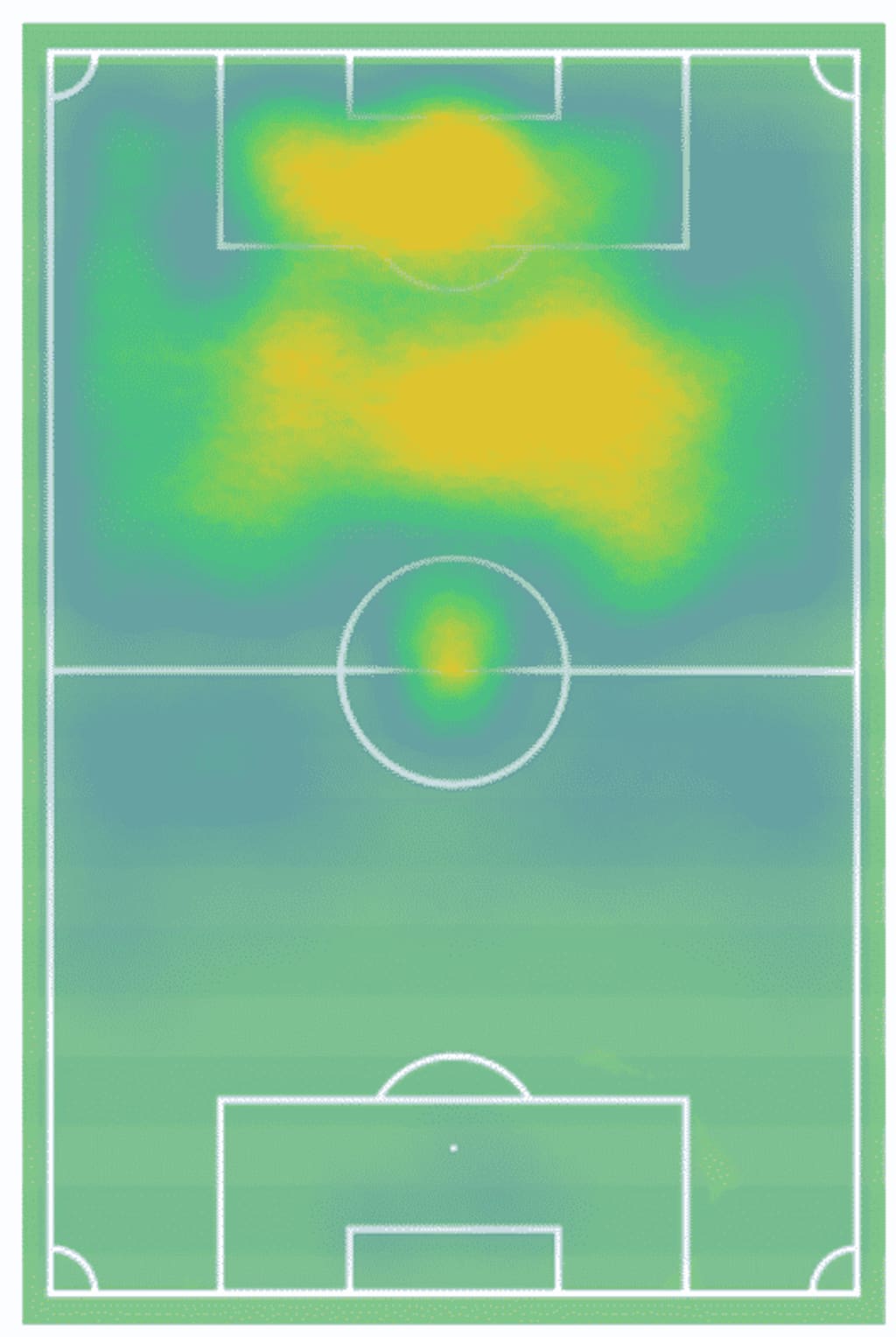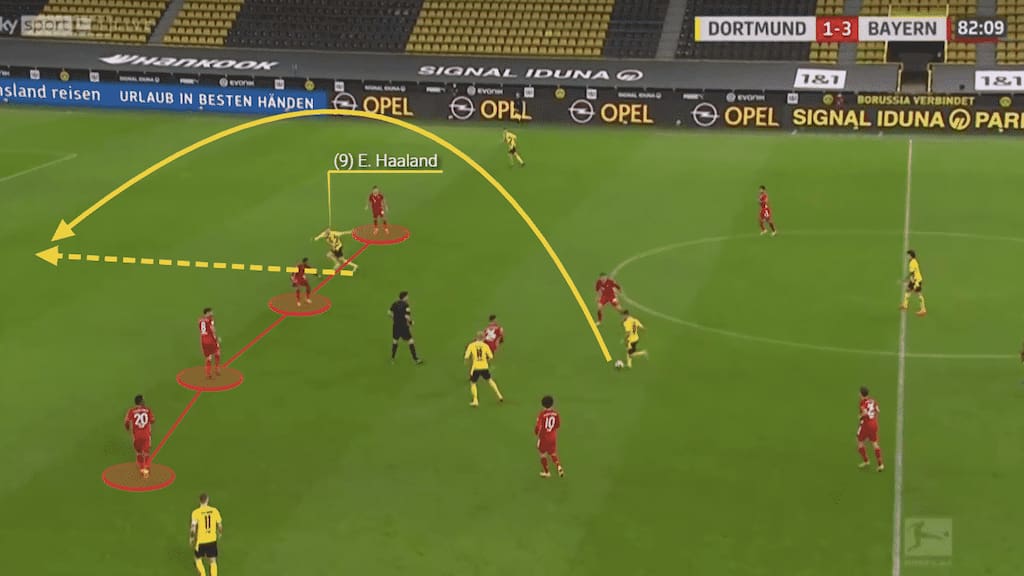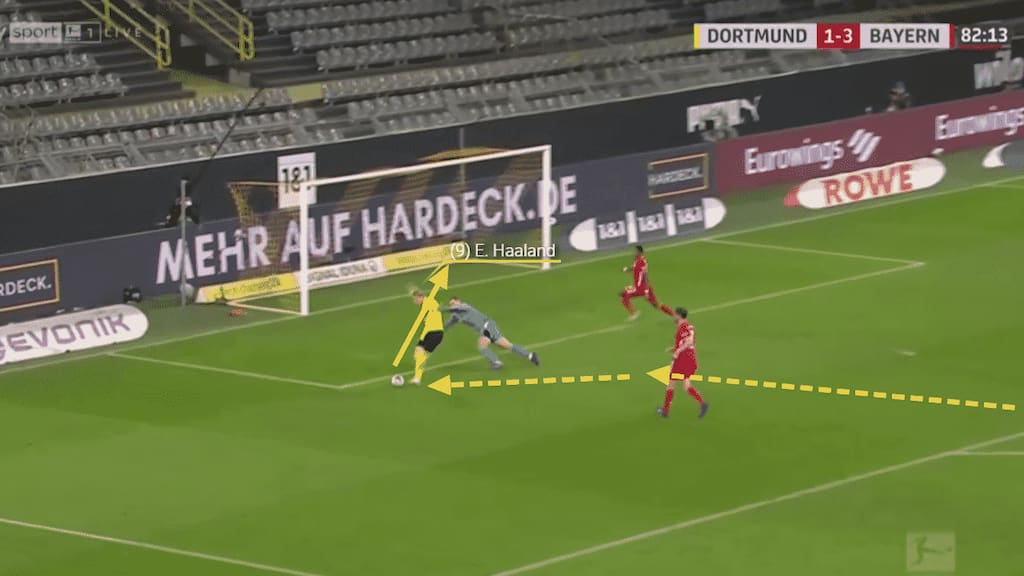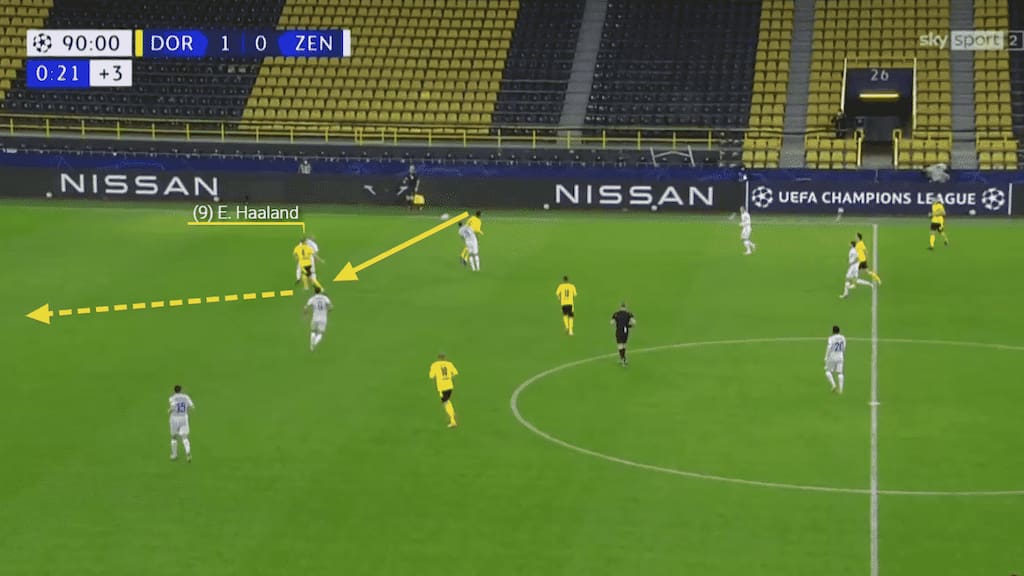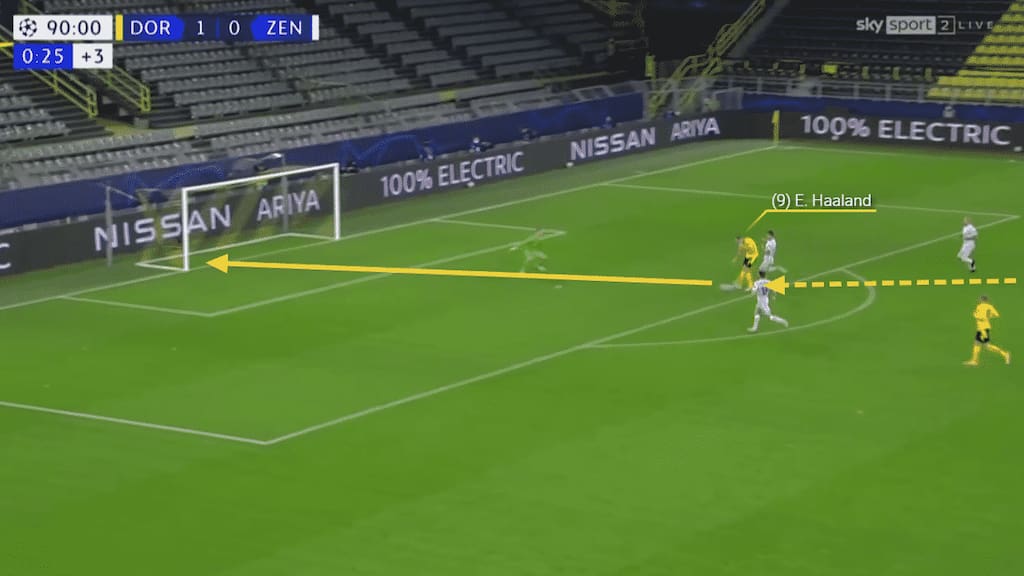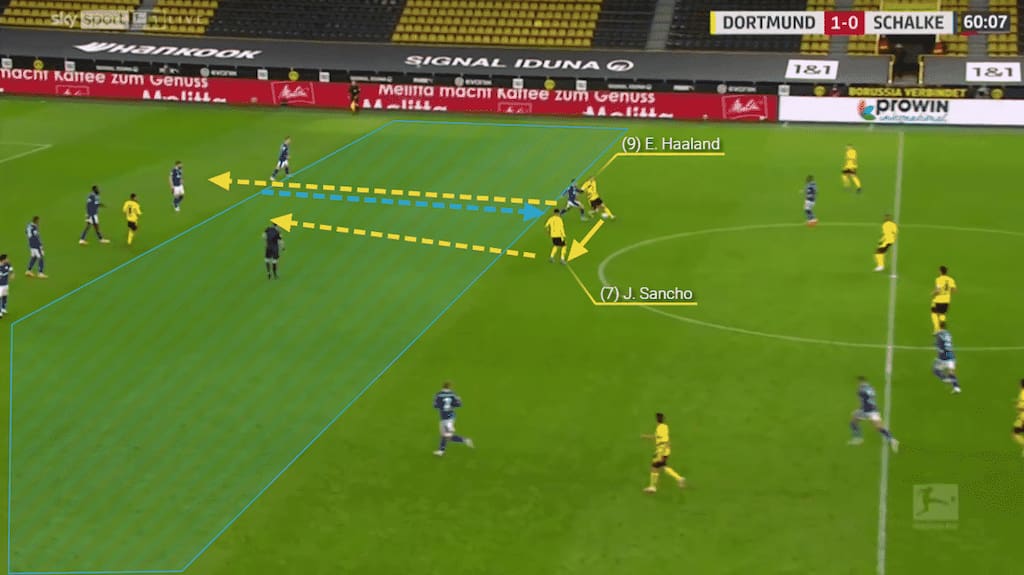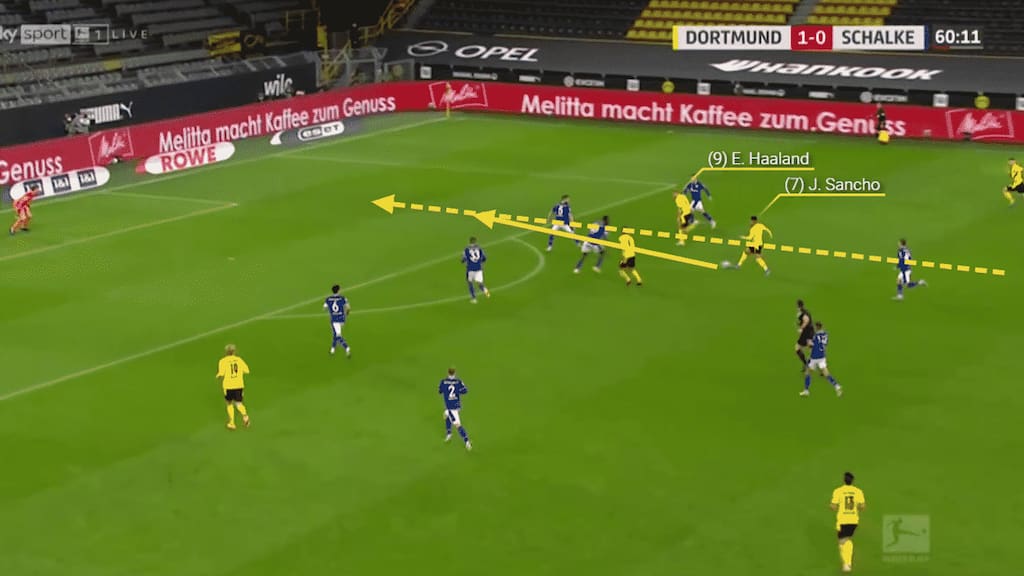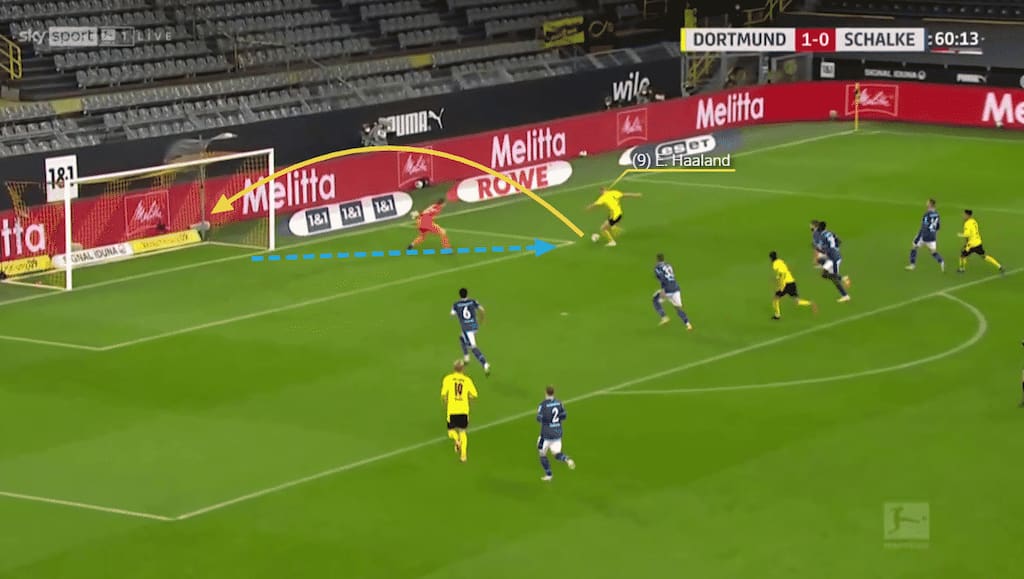Erling Haaland: Profile, Expert Analysis, Tactical Overview & Video
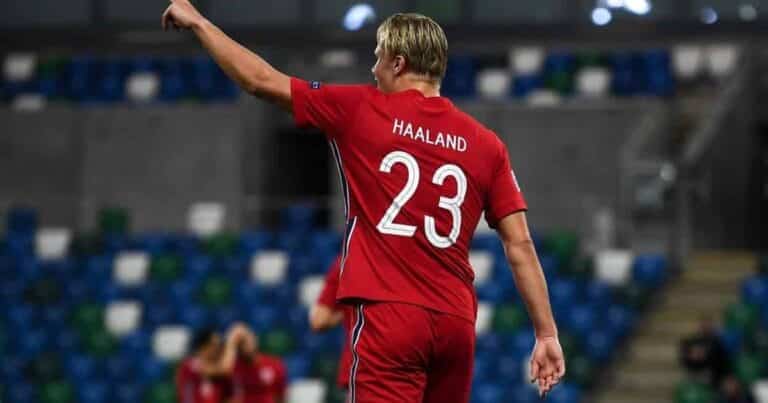
Table of Contents
Erling Haaland: Profile
Name: Erling Haaland
Date of birth: July 21, 2000
Nationality: Norway
Position: Striker
Height: 1.94m
Erling Haaland: Introduction
Erling Haaland has become one of the sensations of European football. A tall, commanding yet deceivingly fast striker with the ability to finish from almost anywhere with either foot or in the air.
Erling Haaland: Background
Born in Leeds, England, whilst father Alf-Inge was playing at Leeds United, Erling Haaland, from his early years, was immersed in football. After moving back to Norway at the age of 3 following his father’s retirement, Haaland joined the Bryne academy when he was 5. He worked under coach Alf-Ingve Berntsen, who immediately realised his potential.
“I saw Erling for the first time when he was five when he joined indoor training with a group one year older,” Berntsen said to Goal. “His first two touches led to goals. He was very, very good from the first moment, even though he hadn’t played in the club before.”
Haaland joined the Norwegian national setup with the under 15s in 2015, where he worked with one of his father’s former teammates, Gunnar Halle. Halle was unconvinced by Haaland at the time due to, surprisingly, his lack of physique: “He was without a doubt a good player who scored many goals, but was by no means outstanding,” said Halle. “His physique and coordination still had to develop at that time. That he would one day become a superstar was still a long way off.
The youngster eventually moved to play under now-Manchester United coach Ole Gunnar Solskjaer at Molde. After two progressive seasons with the Norwegian giants, Haaland received offers from multiple clubs, but was most impressed by the project at Red Bull Salzburg. The Austrian side’s consistency in developing young talent before they move on to bigger things is unrivalled.
Haaland would be following two prolific strikers for Salzburg. First, Jonathan Soriano – the Spaniard who arrived from Barcelona scored 120 league goals in 144 games. His replacement, Moanes Dabbur, netted 72 goals in 142 appearances across all competitions. Starting strikers for The Bulls tend to score goals, and Haaland continued this trend in emphatic fashion.
He only managed 5 appearances at the end of the 2018-19 season, but nevertheless bagged his first goal for his new club. However, it was last season in which Haaland truly notified Europe of his talents. Salzburg’s frustrations in attempting to secure Champions League qualification had finally subsided, as the Austrian champions begun solidifying their regularity in the competition. Haaland scored in 5 of the 6 group stage matches – 4 times against Genk, 3 times against Napoli and once against Liverpool.
😎 Erling Braut Haaland for Salzburg this season = 🔥🔥🔥
In Europe: ⚽️6⃣ 👕3⃣
All competitions: ⚽️2⃣2⃣ 👕1⃣5⃣#UCL | @RedBullSalzburg pic.twitter.com/HO1EDPn1LN
— UEFA Champions League (@ChampionsLeague) November 1, 2019
Haaland soon simply became too good to remain with Salzburg, and in January of this year, after much speculation regarding his potential destination, Borussia Dortmund signed the Norwegian for his €20 million buy-out clause. The story for Haaland continues to be about goals, goals and more goals. It seems that, wherever the future lies for the forward, an increase in production in front of goal is sure to follow.
Expert insight on Erling Haaland
“An absolute monster, but oh so much more than that. Erling Håland has catapulted directly to the top in the centre forward debate in a way rarely seen in the recent history of the beautiful game.
Son of former Norwegian international and Premier League veteran Alf-Inge Håland, he has already bested his fathers reputation with relative ease.
With a fearsome strike rate since his Molde FK debut in 2017, there is perhaps not a more feared striker in Europe aside from Bundesliga rival Robert Lewandowski. Unlike a player akin to Timo Werner who relies on blistering pace and movement off the ball, Håland’s physique added to a recorded top-speed of 36kmh makes him a nightmare to defend against.
His strength on the ball and in the air can see him operate as a traditional target man, holding up play and bringing wide men into the game, while offering an aerial threat simultaneously. But his movement off the ball, intelligent running of the channels, and instincts to run off the shoulder in the final third (or in a dead-sprint on the counter), are seeing him quickly becoming the chief example of a marriage of pace and power at the elite level. Impressive finishing instincts in and around the eighteen round-off the profile of a player who is surely to become the envy of the footballing world.”
Tactical Overview of Erling Haaland
Instinctual – The word which perfectly symbolises the style of Erling Haaland. The Norwegian knows where to be at the right place at the right time and when found, has the killer instinct and cold lethality to finish the opportunities provided to him.
His heat map displays this. The intensity inside the box displays where Haaland loves to be, most comfortable and at ease knowing the goal is just yards away and any shooting chance will have a higher chance of success.
The second layer of intensity is across the outside of the box. Haaland, when not in the box, sets up shop bullying the opposition’s back line, shifting between players and attempting to open up gaps for his teammates.
His annoyance of opposing defenders often pays off. Playing on the shoulder of the last man across the back line leaves stoppers nervous. With a perpetual need to be at 100% concentration for the full 90 minutes, and playing in a side with quality creators, Haaland scores so often because of this psychological edge he holds over the opposition. This, combined with his rapid acceleration and strength to hold off pursuers makes the Norwegian appear, at times, near unstoppable.
As a commanding ‘target man’ with the turn of speed Haaland possesses, the Norwegian links up play fantastically. Playing one-twos with teammates sees the starlet add variety to his game, suddenly dropping deep, drawing out defenders before laying the ball off and sprinting in behind. Whilst the typical ‘off the shoulder’ play works well for Haaland, he makes himself even more difficult to deal with by making his game more diverse.
There are countless examples of Haaland making life for opposing defenders a nightmare. Be it playing on the last man, dropping deep to open up spaces in the final third or by simply buzzing around the penalty area awaiting a loose ball or cut back to find him.
Haaland may not, on the surface, appear what a striker in the modern era of football should be sculpted like, but could actually represent the future prototype of attackers for years to come.
